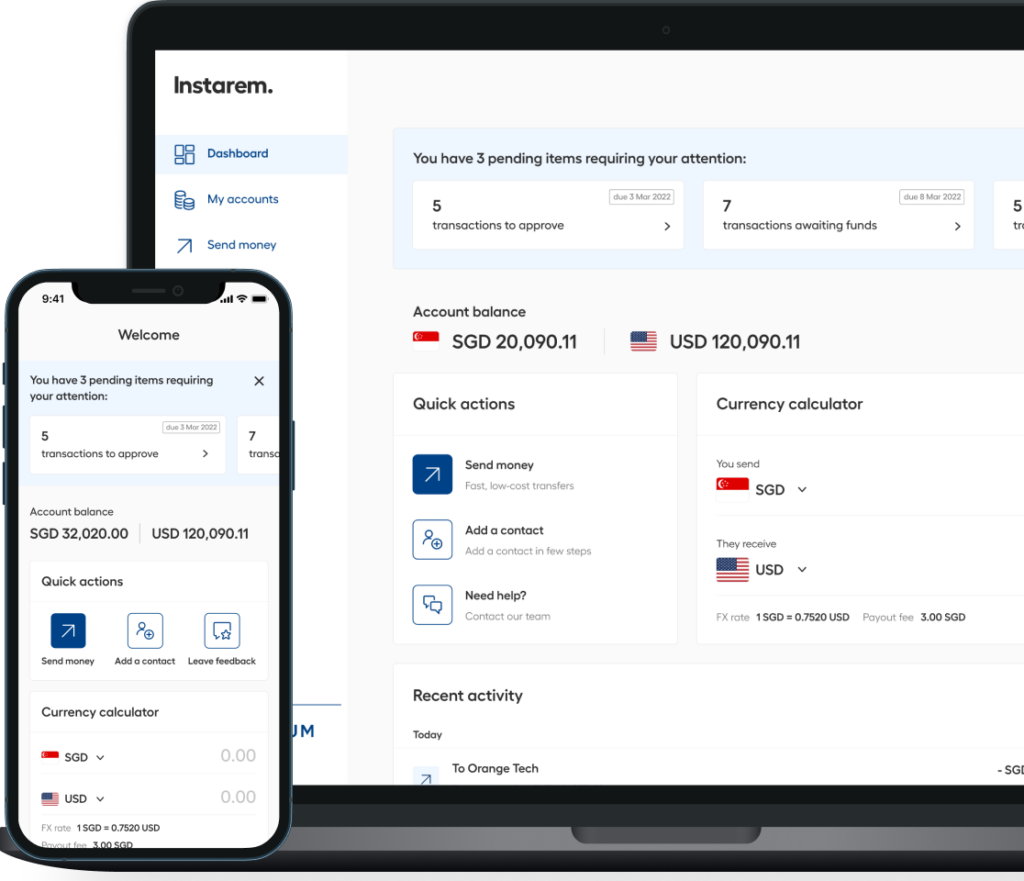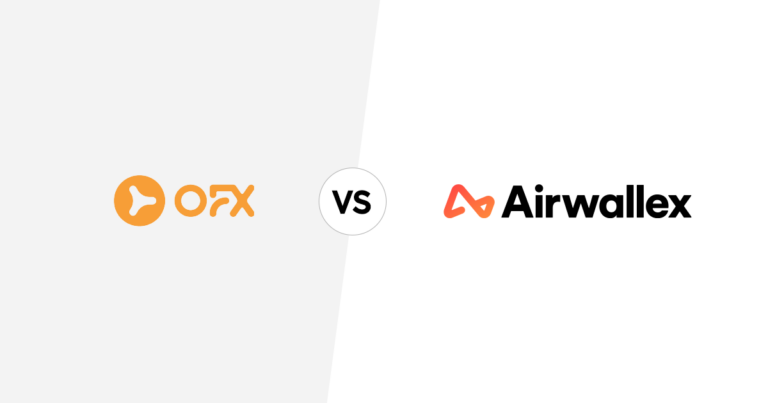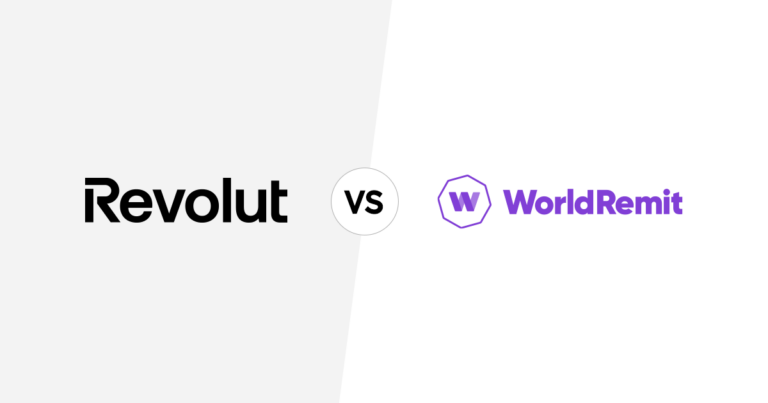A guide to US business visa: Types, eligibility & application

This article covers:
Key Takeaways
Types of US Business Visa
- B-1/B-2 Visa (temporary for business, leisure or both)
- E-1 Treaty Trader Visa (for trade between the US and your home country)
- E-2 Treaty Investor Visa (for investment in a US business)
- L-1 Visa (for intracompany transfers of managers, executives or specialised workers)
Eligibility and Requirements
- Each US business visa type has specific requirements.
- Generally, you need to show strong ties to your home country and prove your trip is temporary.
- You may need to submit documents like a valid passport, application form, financial statements and a business plan.
Tips for Getting Your US Business Visa Approved
- Prove strong ties to your home country (job, family, etc.).
- Prepare a detailed travel itinerary (if applying for a B-1/B-2 visa).
- Practice your interview answers honestly and confidently.
- Consider hiring an immigration lawyer for guidance.
Meet Oliver, a young entrepreneur from Singapore with an app design that could change the way people connect. He’s been eyeing the US market for a while now. It’s ranked as the most entrepreneurial country in the world, with four of its cities leading as global fintech powerhouses.
To make his dream come true, he has to be on the ground. He must attend meetings, pitch the app to potential investors and seal deals. But hopping on a plane to the US simply won’t cut it; Oliver needs the right paperwork to enter the country legally.
This is where a US business visa comes into play. If you’re in the same situation as Oliver, you should learn how to get one. In this blog post, we’ll break down everything you need to know about US business visas, from types to eligibility requirements and interview tips.
Continue reading below to learn more!
What is a US Business Visa?
A US business visa allows foreign citizens to enter the United States for business activities. These visas are non-immigrant, which means they do not grant permanent residency.
Keep in mind that business visa holders can only conduct business-related activities within the United States for a temporary period. It typically ranges from a few weeks to several months, depending on the purpose of the visit and the discretion of the issuing authority.
Types of US Business Visa
To help you understand the specific activities permitted and the duration of your stay, let’s explore the different types of US business visas available. Take a closer look at them below:
B-1/B-2 Business Visa
A B-1/B-2 business visa is a temporary non-immigrant visa for foreign visitors seeking temporary entry to the US. It allows for business trips (B-1), leisure travel (B-2), or even a combination of both (B-1/B-2).
Generally speaking, the B-1 visa allows foreigners to negotiate contracts, settle estates, consult with business associates in the US and attend conferences or conventions. It doesn’t usually permit operating a business or offering consulting services.
The B-2 visa, on the other hand, caters to recreational travel. This includes going on a vacation, visiting friends and seeking medical treatment. You can also participate in musical events, sports or contests—as long as you’re not getting paid.
Often, these visas are combined and issued as one visa called the B-1/B-2.
This visa is typically issued with an initial validity period of six months. The US Embassy considers this enough time to conduct business and tourism in the country.
Take charge of your business payments

Eligibility and Requirements
When you apply for a B-1/B-2 visa, you need to convince a consular officer that you meet the requirements set by the U.S. Immigration and Nationality Act (INA). Remember that their laws require officers to automatically assume you’re planning to stay permanently in the U.S.
You need to convince them you’ll leave after your visit by showing:
- Your trip is temporary. You’re coming for business, tourism or medical reasons, and you have a set return date.
- You have enough money. You should prove you have enough cash to cover your travel expenses in the US.
- You have a reason to go back home. You have a job, a house or a family waiting for you in your home country, showing you don’t plan to stay in the US forever.
Unfortunately, according to the Immigration and Nationality Act, not everyone qualifies for the B-1/B-2 visa.
And if you’re eligible for this type of business visa, here are the requirements you should prepare and submit:
- A completed Nonimmigrant Visa Electronic Application (DS-160) Form.
- A passport valid for travel to the United States with an expiration date of at least six months beyond your intended stay. If several people are in your passport, each person applying for a visa should fill out their application.
- A small passport-sized photo.
- Proof that you’ve paid the visa application fee in your local currency. Depending on where you’re from, you might also have to pay an extra fee. You can check the Department of State’s website for more information.
- A letter confirming your interview appointment. And if you have any extra documents that might help explain your situation, bring those too.
Other supporting documents may also be considered, such as:
- If you’re visiting family members, make sure you bring copies of their proof of legal status including a valid visa or green card.
- Bring any papers about your past visa or immigration status if you’ve been to the US before.
- Bring criminal or court records if you’ve been arrested or convicted. This applies even if you finished your sentence or got a pardon.
- If a child is applying, show their birth certificate and their parents’ visa.
- Disclose your trip plans if you have any (even if tentative).
Warning: Don’t provide false documents. If you do, you might never get a visa again. If you’re worried about privacy, put your papers in a sealed envelope and take them to the Embassy. They will uphold confidentiality and won’t disclose this information.
How To Apply for a B-1/B-2 Visa
To apply for a B-1/B-2 visa, here are the steps you should follow:
- To get started, pay the visa application fee.
- Fill out the Nonimmigrant Visa Electronic Application (DS-160) form.
- Schedule an appointment for your visa interview. Make sure you have three things handy:
- Passport Number: Your unique passport identifier.
- MRV Fee Receipt Number: Proof you paid the visa application fee.
- DS-160 Confirmation Barcode: A 10-digit code from your online visa application.
- Come to the U.S. Embassy/Consulate for your visa interview at the appointed date and time. Make sure to bring the following:
- A printed copy of your appointment letter
- Your DS-160 confirmation page
- A recent photo
- Your current passport
- Any old passports you have.
Note that your application won’t be accepted if any of these items are missing.
Restrictions: Activities Prohibited Under a B-1/B-2 Visa
This visa does not allow travel for the following purposes:
- Studying in the US
- Long-term employment with a US company
- Paid performances or professional engagements in front of a paying audience
- Arrival as a crewmember on a ship or aircraft
- Work in the foreign press, radio, film, print journalism, or other media
- Seeking permanent residence in the United States
E-1 and E-2 Treaty Visa
The E-1 treaty trader and E-2 treaty investor visa are for citizens of countries that have a commerce and navigation treaty with the United States. It allows them to:
- Conduct significant trade, including services and technology, mainly between the US and their home country.
- Run a business they invested in.
- Invest a substantial amount of money.
These countries include Argentina, Spain, Philippines, Pakistan, Japan, Canada, Greece, Ireland and Singapore, among others.
Although these visas both serve important diplomatic and financial connections between the US and the countries it has signed treaties with, they have differences. For example, if you have an E-1 visa, you focus on trade, not jobs. There’s no requirement to hire US workers; it’s a way to work for yourself in the US through trade.
On the other hand, an E-2 visa requires you to create jobs in the US. Your investment must be a real business, not just a way to support yourself. You’ll need to show how your company will hire American workers.
They also have different grounds for refusal. Your application for an E-1 visa may get rejected if your trade volume is too low or most of your trade isn’t between the US and your home country. Meanwhile, the grounds for refusal of an E-2 visa include not having a leadership role, the investment is too small for the chosen industry and many more.
Eligibility and Requirements
The E-1 and E-2 visas both require a significant amount of eligibility and requirements. However, they focus on different aspects.
To get an E-1 Visa, you must:
- Be a citizen of a country that has a trade agreement with the US.
- Work for a company in the U.S. owned by people from your home country.
- Be involved in much international trade between the US and your home country (more than half of your company’s trade).
- Trade can involve goods, services or technology, with ownership officially changing hands.
- Hold a high-level position in the company, or have skills so specialised they’re crucial for the company’s success. Regular skilled or unskilled workers won’t qualify.
- Plan to leave the US when your E-1 visa expires.
To get an E-2 Visa as an investor:
- You must be a citizen of a country with a special investment treaty with the US.
- You need to invest a significant amount of money into a real, running business in the US. The amount will vary depending on the business type (more for expensive businesses).
- This can’t be a speculative investment or just parking your money. It must be a business actively operating and generating income.
- The business also can’t be one that just supports you and your family. It needs to make a substantial profit or have a positive impact on the U.S. economy.
- The money you invest should be truly yours and at risk in the business. Loans secured by the business itself don’t count.
- You must be involved in running the business daily. If you’re not the main investor, you’ll need to have a high-level position or very specialised skills. Regular workers won’t qualify.
- You must plan to leave the U.S. when your E-2 visa expires.
How To Apply for an E-1 or E-2 Visa
To apply for an E-1 or E-2 visa, here are the steps you should follow:
- To get started, pay the visa application fee.
- Fill out the Nonimmigrant Visa Electronic Application (DS-160) form. For main applicants, they should also complete and print a copy of the DS-156E Nonimmigrant Treaty Trader/Investor application form.
- Send a copy of your fee receipt and all completed forms to the email address provided by the US Embassy.
- Schedule an interview at least two weeks after completing step 3. You’ll need your passport number, fee receipt number and DS-160 barcode.
- Come to the U.S. Embassy/Consulate at the appointed date and time for your visa interview. Make sure to bring the following:
- A printed copy of your appointment letter
- Your DS-160 confirmation page
- A recent photo
- Your current passport
- Any old passports you have.
Note that your application won’t be accepted if any of these items are missing.
Restrictions: Activities Prohibited Under an E-1 or E-2 Visa
This visa does not allow travel for the following purposes:
- E-1 or E-2 visas are for running your own business, not being an employee. A US company or another E-1 or E-2 business cannot employ you.
- You are not allowed to simply own a business or investment property. You should be actively involved in management.
L-1 Visa
An L-1 visa is a non-immigrant visa that lets international businesses move qualified workers from their offices abroad to US locations, but only for a limited time.
This visa is attractive for multinational companies because it allows them to bring essential staff, like managers and specialists, to the US to run projects, manage operations and share their expertise. This helps the company maintain its global reach.
Moreover, it’s divided into two categories:
- L-1A Visa: This visa is mainly for people with high positions like managers and executives. Through the L-1A visa, they can move to a US branch, affiliate, subsidiary or even the parent company of their current employer.
- L-1B Visa: This is for the experts. It lets a company transfer employees with specialised knowledge to a US office. This could be anything from the company’s products to its unique technological processes and more.
Eligibility and Requirements
To be eligible for an L-1 visa, both you (visa applicant) and your company (sponsor) need to go through some hoops first.
For employees, they must:
- Arrive in the US with a managerial or executive position. They supervise big chunks of the operation or crucial functions.
- Have advanced knowledge the industry doesn’t typically have, related to the company’s products, services, technology or procedures.
- Work for a company with a US branch, affiliate, subsidiary or parent company.
- Have experience abroad. They should have at least one year of continuous work for a foreign company outside the US in the last three years.
For the company (sponsor), they must:
- Have a qualifying relationship with the foreign company employing the visa holder.
- Be a real US business with a physical location where the employee will work. If they’re new, they’ll need a plan to support the position.
- Give the employee a valid job offer and be willing to file an L-1 petition with US Citizenship and Immigration Services (USCIS).
How To Apply For An L-1 Visa
To apply for an L-1 visa, here are the steps you should follow:
- Get the green light from your company. They need to offer you a transfer offer.
- Once you get a transfer offer, your employer should file Form I-129 with US Citizenship and Immigration Services (USCIS).
- Your employer will shoulder all the fees.
- Fill out the Nonimmigrant Visa Electronic Application (DS-160) form.
- Pay the L1 visa application fee.
- Schedule your L1 visa interview and prepare the necessary paperwork. This includes the following:
- A valid passport
- L1 visa interview appointment letter
- DS-160 confirmation page and code
- Letter from employer confirming your transfer
- Your CV or resume
- Attend the interview at the appointed date and time.
Restrictions: Activities Prohibited Under an L-1 Visa
This visa does not allow travel for the following purposes:
- You cannot work outside the authorised employer or location. You are only allowed to work for the specific US company that petitioned for you.
- You cannot start your own business.
- You cannot significantly change your job duties or responsibilities. This can harm your visa status.
Tips on How To Get Your US Business Visa Approved
Securing a US business visa doesn’t always end on a happy note. The application process can be complicated, lengthy and expensive even with a seemingly strong case. Delays and denials happen, leaving hopeful entrepreneurs frustrated and their business plans on hold.
However, you can always increase your chances of your US business visa getting approved with enough preparation. When you understand the process and learn how to answer interview questions, you can present a compelling case to the visa officer.
Check out some helpful tips below:
Prove Strong Ties to Home Country
Remember that a US business visa is a non-immigrant visa. This means that you have to convince the consular officer your stay in the US is only temporary and you’ll return home once your visa expires.
You should prove that your ties to your home country are stronger than your desire to stay in the United States.
These ties can include recent payslips to a job in your home country, recent bank statements, investments or a picture of your family. But of course, the types of acceptable proof will vary depending on the applicant. We cannot guarantee a single document, paperwork and letter that can successfully grant you a business visa.
Prepare a Detailed Travel Itinerary
If you’re applying for a B-1/B-2 visa, you’ll need a detailed itinerary for your US trip. US officials want to know exactly where you’re going, why you’re going and for how long. Be specific!
Say you’re going to New Jersey. If you’re travelling to that state to attend your friend’s birthday party, specify that in your application.
Practice Your Interview Answers
You will be required to attend a visa interview to discuss your reasons for travel and show that you meet the eligibility requirements for the specific visa you’re applying for. This is why you should be prepared to answer questions concisely and clearly.
For instance, if you’re applying for an L-1 visa, here are some interview questions that might be asked:
- Tell me about your current employer. What company do you work for?
- How long have you been working for this company?
- Can you describe your role at the company? What is your job title and what are your main responsibilities?
- Do you have any supervisory responsibilities in your current role? How many people do you manage, if any?
If it’s an E-2 visa interview, questions may include:
- How did you meet your business partners, if you have any?
- What inspired you to open this business?
- What are your hiring plans?
- Can you disclose the amount of money you’ve invested in this business?
When it comes to answering interview questions, always try to be honest. Keep in mind that consular officers can spot a fake a mile away. Assume that they know everything about you, and if you’re caught lying, you can be subject to permanent visa ineligibility.
Answer truthfully, and if you’re unsure, simply say so. It’s always better to be upfront than to fabricate a story.
Additionally, provide detailed answers. The more specific your answers are, the more credible you’ll appear. While some questions might be straightforward, others will require a deeper explanation.
Consider Hiring an Immigration Lawyer
You can apply for a US business visa without a lawyer. However, an immigration lawyer’s expertise can be invaluable in streamlining the process and improving your chances of success. They can help you avoid mistakes when filling out paperwork, build your confidence and explain immigration laws, to name a few.
Most importantly, rejections happen. If you believe yours was unfair, you can appeal. An immigration lawyer can explain the rejection and guide you through the appeal process. Often, lawyers gather evidence strong enough to reverse the original decision.
Final Thoughts
There’s no denying that the United States is the global leader in entrepreneurship and business. The country has the most profitable companies that are globally recognised, including Apple, Microsoft, Amazon and Facebook.
That’s why it’s not surprising that people fly to the US to chase the American dream. You get access to a diverse market, tax benefits, business-friendly regulations and accelerator programs that provide funding.
And when you have a US business visa, you can tap into these opportunities. To get started, you just need to understand eligibility requirements, the application process and questions you may have to answer. Preparation is key!
Once your visa is approved, another important consideration comes into play: managing your finances across borders. Thankfully, Instarem can be your ideal first step for managing your finances as you settle your business ventures in the US.
- Fast Transactions: Up to 12X faster than banks. Most business transactions are completed within the same day.
- International Business Payments: Send and receive payments to your overseas partners and employees in over 160 countries, all at competitive exchange rates and low fees. You can also transfer funds securely and efficiently between your different business locations.
- No Hidden Fees: There are no setup or subscription fees, nor are there any hidden charges to surprise you.
Grow your business with Instarem. Sign up now and manage your business finances easier—no matter where you are.
FAQs
Do I qualify for a US business visa?
You might qualify for a US business visa if:
- You have a legitimate business reason for travelling to the US.
- You are employed by a foreign company.
- You have strong ties to your home country that ensure your return once your visa expires.
- You can provide sufficient financial resources to cover your trip.
What if my US business visa application is denied?
If your visa application is denied, you can reapply and study the reasons for the initial denial. Consulting with an immigration attorney may also be helpful in this situation.
*Disclaimer: This article is intended for informational purposes only. All details are accurate at the time of publishing. Instarem has no affiliation or relationship with products.




















